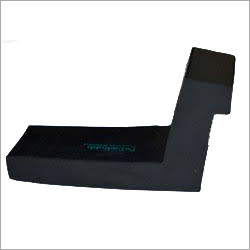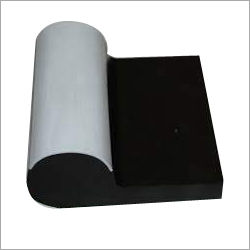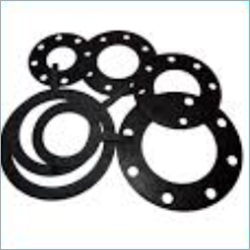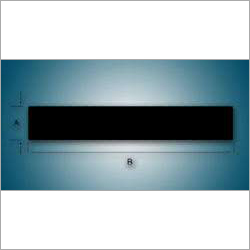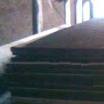

Expansion Joint Filler Board
8000.00 INR/Piece
Product Details:
- Type Joint Filler Board
- Click to view more
X
Expansion Joint Filler Board Price And Quantity
- 500 Piece
- 8000.00 INR/Piece
Expansion Joint Filler Board Product Specifications
- Joint Filler Board
Expansion Joint Filler Board Trade Information
- Cash on Delivery (COD) Cash in Advance (CID) Cash Advance (CA)
- 500 Piece Per Day
- 8 - 10 Days
- Yes
- Free samples are available
- Carton Box
- Australia Eastern Europe Middle East Central America Africa South America Western Europe Asia North America
- All India
Product Description
Expansion joint filler boards are materials used in construction to fill and seal gaps or joints between two surfaces or structures. These joints are designed to allow for expansion and contraction of the surfaces or structures due to temperature changes or other factors.
Expansion joint filler boards are typically made of materials that are compressible, such as foam or cork, which allows them to expand and contract with the joints they are filling. They are placed between the two surfaces or structures to create a gap that can be filled with a sealant to prevent the entry of water, dirt, or other debris.
The filler board material used will depend on the specific application, the expected movement of the joint, and the level of compression required. Some common types of filler board materials include closed-cell foam, open-cell foam, cork, and rubber.
Expansion joint filler boards are important in construction to prevent damage to structures caused by expansion and contraction, and to ensure that joints remain watertight and free from debris. Proper installation of expansion joint filler boards is crucial to ensure their effectiveness and longevity.
Expansion Joint Filler Board Features:
Expansion joint filler boards have several features that make them a useful material in construction. Here are some of their key features:
1. Compressibility: Expansion joint filler boards are made of compressible materials, such as foam or cork, that can absorb and accommodate the movement of the joint due to temperature changes, moisture, or structural loading.
2. Durability: Filler boards are designed to withstand high compressive loads without deforming, crumbling, or disintegrating. They are also resistant to chemical degradation, moisture, and ultraviolet (UV) radiation.
3. Ease of installation: Filler boards are easy to install and can be cut to fit the exact size and shape of the joint. They can also be installed quickly, reducing downtime and labor costs.
4. Thermal insulation: Filler boards offer thermal insulation properties that can help reduce heat transfer between two surfaces, improving energy efficiency.
5. Water resistance: Filler boards are water-resistant and can be used in wet environments without losing their properties. They also prevent the ingress of water into the joint.
6. Sound insulation: Filler boards can help to reduce noise transmission through the joint, making them ideal for applications where sound insulation is required.
7. Non-reactive: Filler boards are non-reactive and do not chemically interact with the joint sealant, ensuring the longevity of the joint seal.
Overall, expansion joint filler boards are an essential component of many construction projects and are crucial to ensuring the long-term stability and integrity of the structure.
Expansion Joint Filler Board Applications:
Expansion joint filler boards are used in a wide range of construction applications where movement and stress need to be accommodated in a joint between two surfaces. Here are some common applications of expansion joint filler boards:
1. Bridges: Expansion joint filler boards are used to fill the gaps between bridge decks and abutments or piers. They help to accommodate the movement caused by temperature changes, wind, and traffic loading.
2. Highways: Expansion joint filler boards are used in highways to fill the gaps between concrete slabs, allowing for the expansion and contraction of the concrete due to temperature changes.
3. Buildings: Expansion joint filler boards are used in buildings to fill the gaps between concrete slabs, walls, and other structural components. They help to accommodate movement caused by temperature changes, wind, and structural loading.
4. Runways: Expansion joint filler boards are used in runways to fill the gaps between concrete slabs, allowing for the expansion and contraction of the concrete due to temperature changes.
5. Water tanks and swimming pools: Expansion joint filler boards are used in water tanks and swimming pools to fill the gaps between the walls and the bottom of the tank or pool, allowing for the expansion and contraction of the walls due to water pressure and temperature changes.
6. Airport terminals and train stations: Expansion joint filler boards are used in airport terminals and train stations to fill the gaps between concrete slabs and other structural components, allowing for the expansion and contraction of the concrete due to temperature changes and structural loading.
7. Parking garages: Expansion joint filler boards are used in parking garages to fill the gaps between concrete slabs, walls, and other structural components, allowing for the expansion and contraction of the concrete due to temperature changes and vehicle loading.
Overall, expansion joint filler boards are used in any application where a joint needs to accommodate movement or stress, while maintaining watertightness and structural integrity.
Frequently Asked Questions:
1. What is an expansion joint filler board?
Ans: An expansion joint filler board is a compressible material that is used to fill the gaps between two surfaces, allowing for movement and stress accommodation in a joint.
2. What are expansion joint filler boards made of?
Ans: Expansion joint filler boards are typically made of materials such as foam, cork, rubber, or bitumen.
3. What is the purpose of an expansion joint filler board?
Ans: The purpose of an expansion joint filler board is to accommodate movement and stress in a joint, while maintaining watertightness and structural integrity.
4. How do you install an expansion joint filler board?
Ans: The installation of an expansion joint filler board involves cutting the board to fit the joint size and shape, then placing it into the joint and compressing it to the appropriate level.
5. What is the lifespan of an expansion joint filler board?
Ans: The lifespan of an expansion joint filler board depends on the type of material used, the level of compressive load, and the environmental conditions. However, they typically have a lifespan of 10-20 years.
6. Can expansion joint filler boards be recycled?
Ans: Yes, some types of expansion joint filler boards can be recycled, such as foam or rubber boards. However, it depends on the specific material used and the recycling facilities available in the area.
7. Can expansion joint filler boards be used in wet environments?
Ans: Yes, expansion joint filler boards are designed to be water-resistant and can be used in wet environments without losing their properties.
8. What is the difference between an expansion joint filler board and an expansion joint sealant?
Ans: An expansion joint filler board is a compressible material that fills the gap in a joint, while an expansion joint sealant is a flexible material that seals the joint to prevent water and debris from entering. Both materials are often used together to provide a complete joint solution.
Overall, expansion joint filler boards are an essential component of many construction projects and are crucial to ensuring the long-term stability and integrity of the structure.
Tell us about your requirement

Price:
Quantity
Select Unit
- 50
- 100
- 200
- 250
- 500
- 1000+
Additional detail
Mobile number
Email

 English
English Spanish
Spanish French
French German
German Italian
Italian Chinese (Simplified)
Chinese (Simplified) Japanese
Japanese Korean
Korean Arabic
Arabic Portuguese
Portuguese Call Me Free
Call Me Free Send SMS
Send SMS Send Inquiry
Send Inquiry
